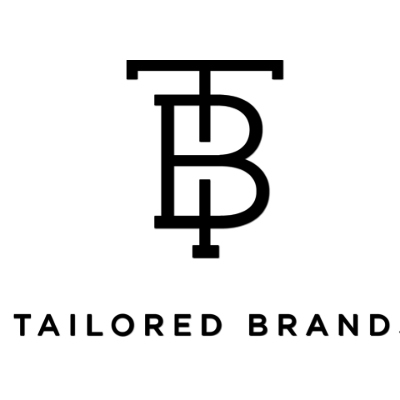In our last blog, we outlined the costs of Chapter 11 Bankruptcy. Shortly after writing that blog, a major Boeing supplier, TECT Aerospace, filed for Chapter 11.
In their filing, they cited “catastrophic financial losses stemming from the suspension of 737 Max production followed by the impact of Covid-19 on industry production rates.
IS THIS THE BEGINNING
There is a debate as to whether this bankruptcy is the beginning of more bankruptcies and distressed asset sales in the aerospace industry.
 A leading aerospace investment banking firm believes without a significant ramp-up in aircraft production, this may be just the beginning of the industry in distress.
A leading aerospace investment banking firm believes without a significant ramp-up in aircraft production, this may be just the beginning of the industry in distress.
However, Congress recently approved a $3 billion payroll support program for the aviation manufacturing industry, that may be helpful in mitigating some of the industry’s financial problems.
WHEN BOEING SNEEZES
 This six-month federal grant program involves a cost-share formula: 50% of the employee’s total compensation level is covered by the federal grant with employers responsible for the remaining 50%.
This six-month federal grant program involves a cost-share formula: 50% of the employee’s total compensation level is covered by the federal grant with employers responsible for the remaining 50%.
It’s not designed for big manufacturers like Boeing, but rather large and mid-sized suppliers. The Aerospace Futures Alliance, which lobbies for the industry in Washington state is optimistic that this new program will see suppliers through to recovery.
Either way, when Boeing sneezes, the entire supply chain catches a cold. Boeing had demanded 10% to 15% price cuts per year, promising that they would make it up in volume as production rates soared. Many suppliers borrowed heavily to invest in new equipment to meet the expended increases in production.
But with margins slashed and debt increased, the MAX grounding and the broader production cuts due to the pandemic was a disastrous combination.
BORROWING WAS MAXED OUT
 The Chapter 11 case filed in Delaware showed that the company was already near the maximum borrowing under its loan agreement by the time that Boeing suspended MAX production. Also, Sprit Aerospace, a Boeing Tier 1 supplier terminated its contract with TECT.
The Chapter 11 case filed in Delaware showed that the company was already near the maximum borrowing under its loan agreement by the time that Boeing suspended MAX production. Also, Sprit Aerospace, a Boeing Tier 1 supplier terminated its contract with TECT.
Over the months, TECT debt has risen to $98 million, with as much as $59 million owed to Boeing for assuming the bank loan and advances to TECT to keep parts flowing.
The same pressures that led to the TECT bankruptcy has impacted smaller aerospace suppliers. At least three other aerospace suppliers in Washington state have closed plants and laid off workers. And while the American Rescue Plan Act of 2021 will aid with these and other suppliers, what happens in September?
GIVE OUT MONEY IT DOESN’T HAVE
 Is the federal government going to continue to give out more money that doesn’t have to be repaid? Or is the market going to recover quickly?
Is the federal government going to continue to give out more money that doesn’t have to be repaid? Or is the market going to recover quickly?
If the answer to these questions is no, then there appears to me more stress coming into the supply chain.
And ultimately to aircraft providers. But aerospace is not the only industry impacted by bankruptcy.
THE MEN’s WAREHOUSE
George Zimmer opened the first Men’s Wearhouse with $7,000 of his own money and $30,000 borrowed from his father.
 The company, which Zimmer started years ago, which ultimately became Tailored Brands, is still borrowing money, in much larger amounts, just to stay alive as the pandemic continues to depress spending on apparel.
The company, which Zimmer started years ago, which ultimately became Tailored Brands, is still borrowing money, in much larger amounts, just to stay alive as the pandemic continues to depress spending on apparel.
In the first quarter of 2020, Tailored Brands racked up a $358.7 operating loss as sales fell by nearly 60%. The retailer entered bankruptcy in August 2020 and emerged in early December of the same year.
At that time, the then CEO stated his company was “confident we are well position for the future and look forward to building upon this momentum as we enter the next chapter.”
 Roughly two weeks later, the CEO told the company’s interim board that Tailored Brands was having liquidity problems.
Roughly two weeks later, the CEO told the company’s interim board that Tailored Brands was having liquidity problems.
In that group were representatives of a trust holding a minority of Tailored Brand equity and bondholders that had received their position through a trust representing a stake in the reorganized Tailored Brands.
In fact, the company’s problems were so deep that they threatened to trigger covenant defaults. These defaults could have precipitated another bankruptcy and even a liquidation of the company.
DILUTED TO $0.00
 With the company in severe distress already, the Tailored Brands found $75 million in new debt financing from the largest shareholder in the reorganized Tailored Brands and a secured debt holder.
With the company in severe distress already, the Tailored Brands found $75 million in new debt financing from the largest shareholder in the reorganized Tailored Brands and a secured debt holder.
This financing was objected to by the beneficiaries of the bankruptcy as the new debt converts to equity and should it convert, the former beneficiaries’ equity would be diluted to zero. Despite that, the bankruptcy court approved the financing in March.
THE VAGARIES OF CHAPTER 11
 These cases demonstrate the vagaries of Chapter 11. Boeing continued to provide funds to TECT until it became clear that repayment was impossible.
These cases demonstrate the vagaries of Chapter 11. Boeing continued to provide funds to TECT until it became clear that repayment was impossible.
It is now left for Boeing to find a buyer for the company or assets that can continue providing the critical parts to the company. And what will be the financial impact on Boeing if it needs to support other critical suppliers?
And how does Tailored Brands, with experienced management and sophisticated bankruptcy attorneys run out of money two weeks after emerging from a Chapter 11 reorganization?
 Lastly, how will a Chapter 11 work for those companies without the resources of these much larger entities?
Lastly, how will a Chapter 11 work for those companies without the resources of these much larger entities?
While we pointed out in our last blog that preplanning is an extremely important aspect prior to filing for bankruptcy, these examples highlight the fact that even with the best planning, major problems can and will happen.
Without adequate preplanning, and consulting experience professionals as part of the preplanning process, companies are more likely not to survive the bankruptcy process.



